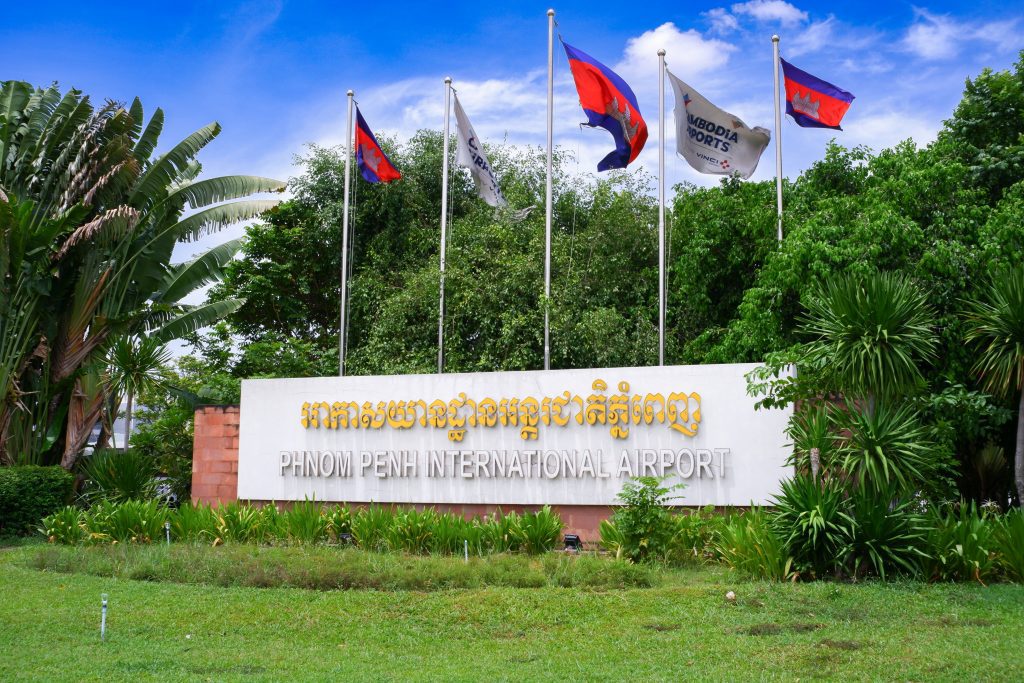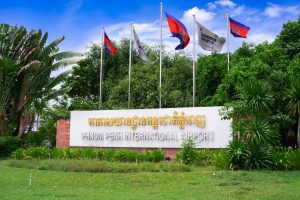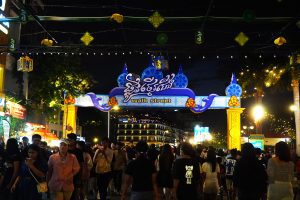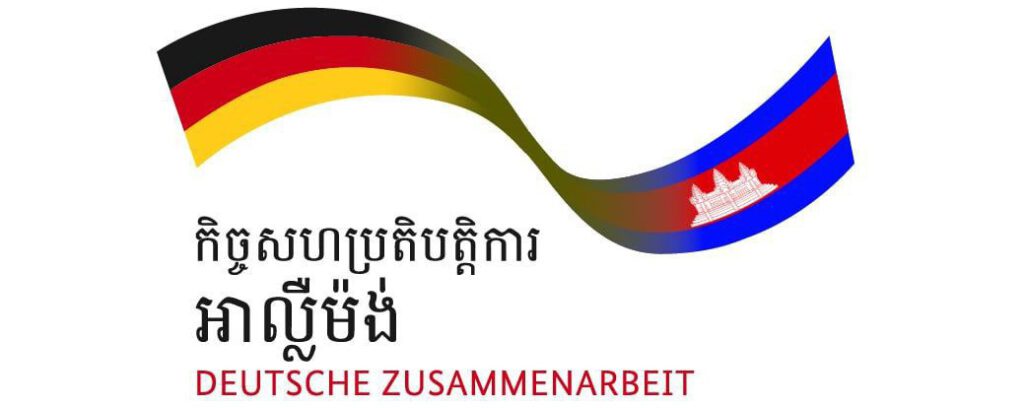Photo by Mom Sovithyea.
By Horn Chantra and Mom Sovithyea, Year 2 students of the Department of Media and Communication
PHNOM PENH – After nearly seven decades of serving as the country’s main gateway, Phnom Penh International Airport – Cambodia’s first and oldest airport – is bidding farewell to the world, paving the way for a bigger and more modern one.
The newly built Techo International Airport – located more than 20 kilometers to the south of the capital Phnom Penh – began operating on Tuesday, September 9, ushering in a new era of air travel that the government hopes will help boost further the country’s development and tourism.
“If we take a look back at the Pochentong International Airport when it was operated in the Sungkum Reastr Niyum period, it played a crucial part in Cambodia’s growth, especially during the late 1950s and the early 1960s, by contributing to the country’s infrastructure,” said Keo Duong, a history lecturer at the Royal University of Phnom Penh.
Inaugurated in 1959, Phnom Penh International Airport – known to the locals as Pochentong Airport – has witnessed up-and-down moments throughout the country’s history since independence from France six years earlier. It hosted visits by several high-profile world leaders, such as French President Charles de Gaulle, who visited Cambodia in 1966, followed by Singapore’s Prime Minister Lee Kuan Yew in 1967.
Seav Sapphire, now 78, recalled the festivity when he joined thousands of Cambodians in welcoming the arrival of the French president at the airport gate.
“I was 19. That day was unforgettable for me — the city was full of excitement. There was a warm welcome for General Charles de Gaulle. The scene was incredible. I remember that around 200,000 people stood along the road from Pochentong Street all the way to the Royal Palace,” said Sapphire, a retiree.
From turbulence to revival
As the country began sliding into a civil war in 1970, the airport’s roles were also transformed to serve aircrafts that were delivering U.S. economic and military aid to prop up Lon Nol’s Khmer Republic regime fighting a losing battle as the Khmer Rouge rebels were closing in.
After the Khmer Rouge took power in April 1975, the airport became a witness to one of the bloody episodes during that era. According to historical accounts, Cambodian students who were studying abroad would arrive by plane after believing the Khmer Rouge’s propaganda to return home to help rebuild the country after the war. As soon as they set foot on the tarmac, they were taken away to never be seen or heard of again. Once in a while, the airport would receive flights carrying visitors from countries the Khmer Rouge had ties with at the time.
During the 1980s, as Cambodia was struggling to rebuild from ashes while being surrounded by international sanctions imposed by the West, the Pochentong airport came back to life – but with limitations – to serve airlines mostly from the Soviet bloc. One of them was Aeroflot airline that was regularly transporting Cambodian students to study in the former Soviet Union and back home after they graduated.
The airport became a scene of jubilee and hope when, on November 14, 1991, then-Prince Norodom Sihanouk returned from exile following the signing of the Paris Peace Accord on October 23 of that year. The airport’s revival began to gather pace with the successive arrival of planes carrying UNTAC personnel and peacekeepers and of commercial flights, connecting Cambodia to the world once again after many years of devastating isolation.
Recognizing the potential of aviation, the Cambodian government signed an agreement with a French-Malaysia joint venture Société Concessionaire d’Aéroport (SCA), in July 1995, granting it the right to operate and upgrade the airport.
“In 30 years, it (SCA) developed the (Phnom Penh International) airport to multiply traffic by 20, from 300,000 passengers in 1995 to 6 million as of today,” the company said in a statement marking the 30th anniversary of its operation of the airport in July this year.
A new era brings mixed emotions
According to a notice from the State Secretariat for Civil Aviation (SSCA), Techo International Airport will begin operations on September 9, 2025. It is not clear yet what the future will hold for the current airport after that date. Meanwhile, Prime Minister Hun Manetwas quick to shoot down rumors that it might become a prime property up for sale.
“There’s never been a decision to sell this airport, and there won’t be one,” he said in a speech during a ceremony marking the 80th anniversary of the establishment of the National Police on May 16. He stressed that the airport land will remain state-owned and that final decision will be announced at the formal inauguration of Techo International Airport at a later date.
As travelers come and go, the residential areas around the Phnom Penh airport have also gradually transformed. More roads have been built and connectivity has been improved. Local businesses have sprung up to serve the growing community. For the residents, this has brought new hope and opportunity.
“The infrastructure in the community near the airport has improved a lot,” said Mach, a resident living near the airport. “I’ve been living here since 1979, when I was just a kid. It feels kind of melancholic to know that it’s going to close in a few months.”
“I’ve been selling drinks and snacks here for about five years now, and it’s really helped support me and my family,” said Kosal, a 45-year-old street vendor near the airport’s exit gate.
“It’s sad to know I won’t be able to run this small business here anymore after it closes,” he said, adding that he would have to take his business somewhere to earn a living.
Sim Chanchakriya, a 22-year-old resident who used to enjoy the extra lights beamed from the airport over her neighborhood near it, said: “I can’t imagine how dark my house will be when the airport stops operating, because the airport lights always shine toward my house at night—this is so sad to even think about it.”







